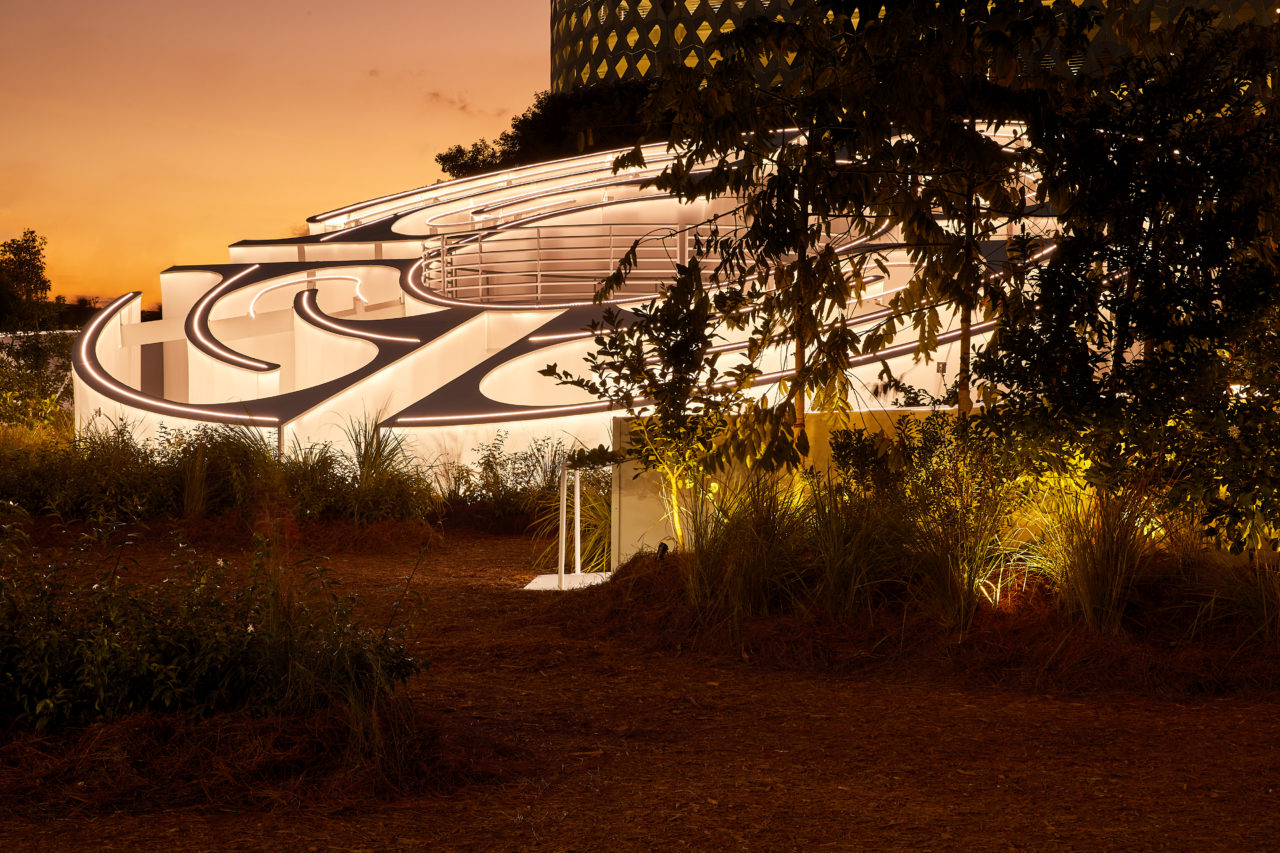We often think of collectible design as the development and sale of extravagant one-offs or limited editions that incorporate sumptuous materials. For most buyers, the acquisition of distinct furnishings, luminaires, ceramics, jewelry and semi-functional sculptures is all about tapping into the aura of its creators, if not also helping to contextualize their already extensive art collections. Seeking to appoint their sprawling interiors with statement pieces, these patrons of sorts visit a close-knit network of dedicated galleries and annual fairs in search of new works that pique their curiosities and to establish close personal relationships with young talents. The transaction is as much about procuring a physical design as it is obtaining a part of the designer, so to speak. Much like in the art world, collectors return to their favorites time and time again. The parallels between these two markets are palpable.
And yet, collectible design is much more than just financial speculation and setting aesthetic trends. Placed apart from the worlds of contract and residential furniture, this ever-evolving scene affords its designers with the time and space to experiment and explore their interests. If not immediately typecast by a specific aesthetic or style, these designers are able to test out different materials, techniques, and applications. Producing wares that are sold at a much higher price point allows them to bypass conventional constraints. A few go so far as to employ the medium as a means of conveying conceptual messages or addressing larger social, political, and environmental issues.

Responding in kind, an increasing number of galleries have begun to fashion themselves as cultural incubators. Developing rich academic programs—whether it be talks, books, video content, or all three—these sales points are starting to rival major museums. In many respects, they’re able to foster a more immediate and grounded discourse. Ultimately, the goal is to sell works but the unique format most galleries have now adopted provides them with enough ‘extra room’ to cultivate such deliverables. The scholarship produced and the narratives communicated also help sell the work. Galleries don’t get into this business to turn a quick profit. Rather, they do so because of a deeply rooted passion they have for this unique output; the merging of personal expression or exploration with unusual material compositions.
Fairs like the well-established Design Miami have also followed suit. In just over a decade and a half, this twice-annual event—taking place in Miami Beach and Basel, Switzerland respectively—has not only solidified itself as the central marketplace for the collectible design industry but also as an important agora for design thinking. A number of topical installations and talk series are carefully developed for each edition. Design is inherently complicit in the problematics of over-consumption, harmful production practices, and even social discrimination. Transversely, it also possesses the tools and processes by which to rectify them. Through its robust programing, the fair seeks to address this duality from various vantage points.
Helmed by the organization’s recently appointed curatorial director Wava Carpenter, this year’s Design Miami—December 1 to 5—took a more humanistic approach. Trying to make this undeniably exclusive event more inclusive was no small feat. The curator, her team, and the fair’s advisory board selected exhibitors that represent a broader spectrum of talent: BIPOC, women, and regionally-underrepresented practitioners that until now, have not been given the opportunity to enter this realm. Beyond this impetus and with a particularly strong focus on contemporary work, Design Miami 2021 welcomed a wider audience than it ever has. Mounted after a year and a half of cancelations and virtual events, the offering was especially exuberant. Most of the galleries and independent Curio exhibitors followed the central “Humankind” theme to a T.
“The practice of design, at its heart, has always aimed to create a better future,” says Carpenter. “But in recent years, as the global challenges that humanity faces have approached existential proportions, the future that designers envision increasingly demands a fundamental reorientation of what it means to be human in this world, calling on all of us to become better stewards of nature and of each.”
The multifaceted culture-maker has long been a proponent of this ethos. Through her creative agency Anava Projects—established with noted design writer Anna Carnick—Carpenter has spearheaded a number of socially-minded and philanthropic initiatives aimed at promoting more equity within the industry, supporting communities impacted by economic instability or natural disasters, and shedding light on different facets of the impending environmental crisis. In Carpenter’s new capacity at Design Miami and Carnick’s new role as its editor-in-chief, the dynamic duo have brought this mandate into the fold.
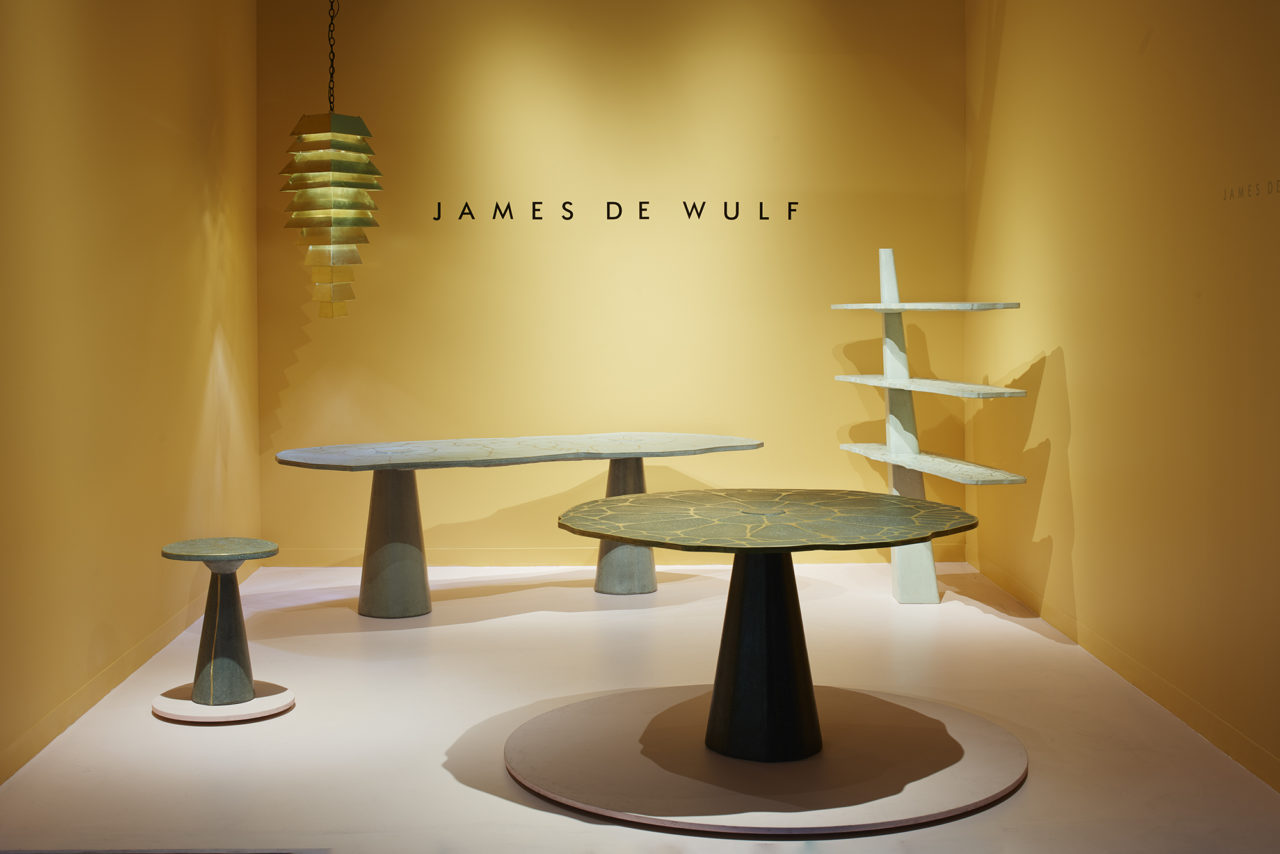
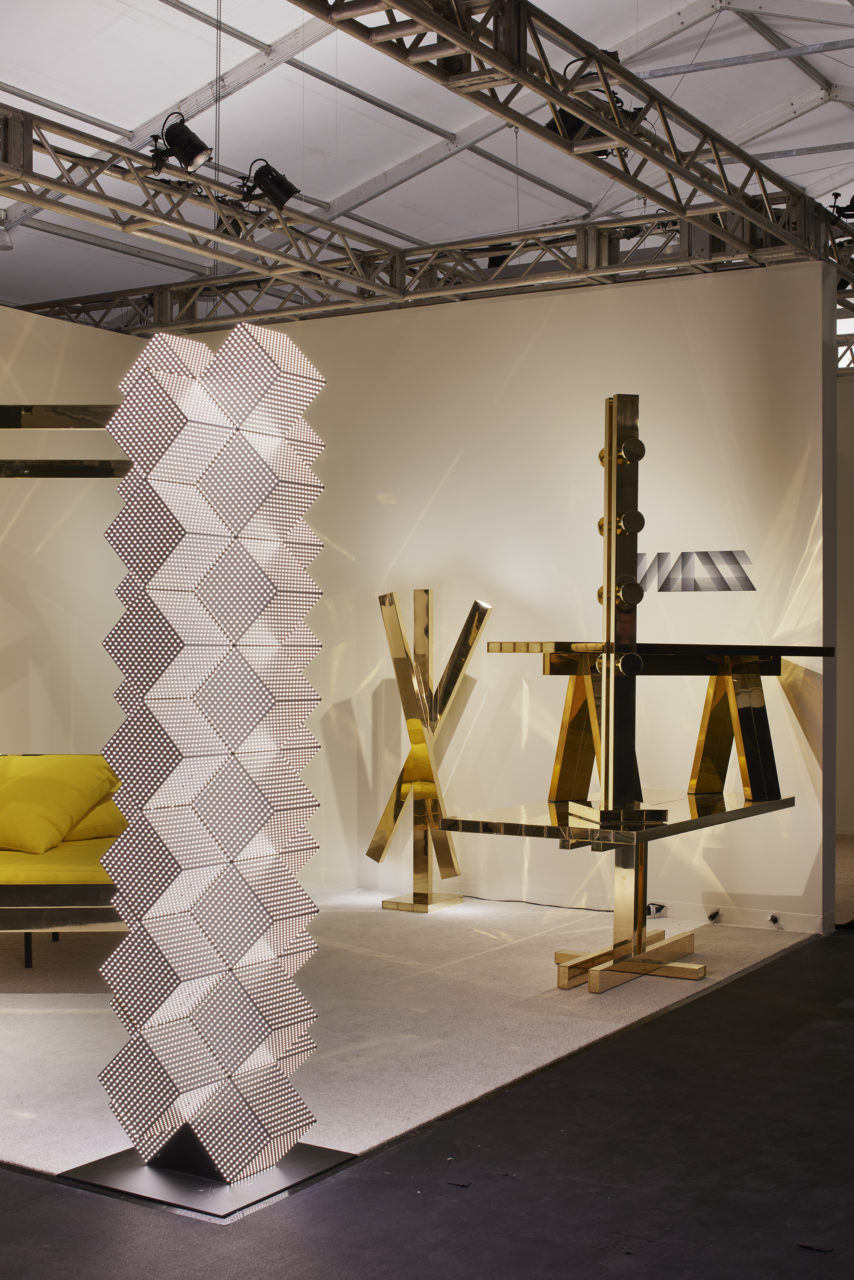
New York staple gallery Friedman Benda chose this occasion to feature the work of British talent Samuel Ross. The dedicated booth, mounted in addition to its main showcase, took on a quasi-mechanical, liminal look to introduce his SIGNAL, RUPTURE, and AMORPHOUS STRAND series. These conceptual yet incredibly visceral furnishings distilled from the multi-versed designer’s rumination on post-industrial western society—the collective navigation of increased commodification and intensified trade routes—but also three generations of the Black experience. Informed by a diverse range of influences and intellectual investigations, Ross’s work tends to transcend different psychographies and social territories. He often works with intentional and ritualistic processes that are central to his conceptual development.
Produced in burnished steel, MDF, fired OSB, and molasses lacquer, the SIGNAL series of surf-board-like chairs reflects the designer’s fascination with questions of survival, impermissible scarification, and recovery. Combining the rigidity of orange-colored metal with the synthetic organicism of meticulously-hewn yet rough precious stone, RUPTURE stems from the talent’s exploration of connection, severance, incongruity, and abstraction. AMORPHOUS STRAND riffs on these two primary collections by adding distorted ligaments and twisted industrial elements that evoke scarred tissue. All three precisely-fabricated series pull from West African and Eurocentric interpretations of Modernism, Brutalism, and color theory. Ross is preoccupied with subverting these tropes.

Other notable evocations of Carpenter’s central “Humankind” theme included Daniel Arsham‘s collaboration with major kitchen and bath manufacturer Kohler. The massive Stone Flow installation stemmed from the New York polymath’s Rock.01 sink design but also highlights the brand’s contribution to DigDeep, a nonprofit working to bring clean water to families in the Navajo Nation. The staging was accompanied by the December 2 talk, Design in the Now: How technology and craft meet the cultural moment, moderated by the fiar’s curator and featuring Arsham, Friedman Benda founder Marc Benda, the brand’s president David Kohler, and Ross as panelists.
The Black Artists + Designer Guild (BADG) outfitted Design Miami’s AIG Private Client and Benjamin Moore-sponsored collector lounge with a wallcovering installation entitled Blackouflage. Developed by guild members Leyden Lewis and Danielle Fennoy, the showcase sought to expand on the ideas surrounding Black identity. Also on view was House of Today. The Beirut-based non-profit seeks to cultivate a sustainable design culture in Lebanon, and its latest venture put young Lebanese designer Khaled El Mays in direct contact with Mexican craftspeople. The resulting New Nature collection is characterized by eclectically expressive forms and ambitious use of noble materials.
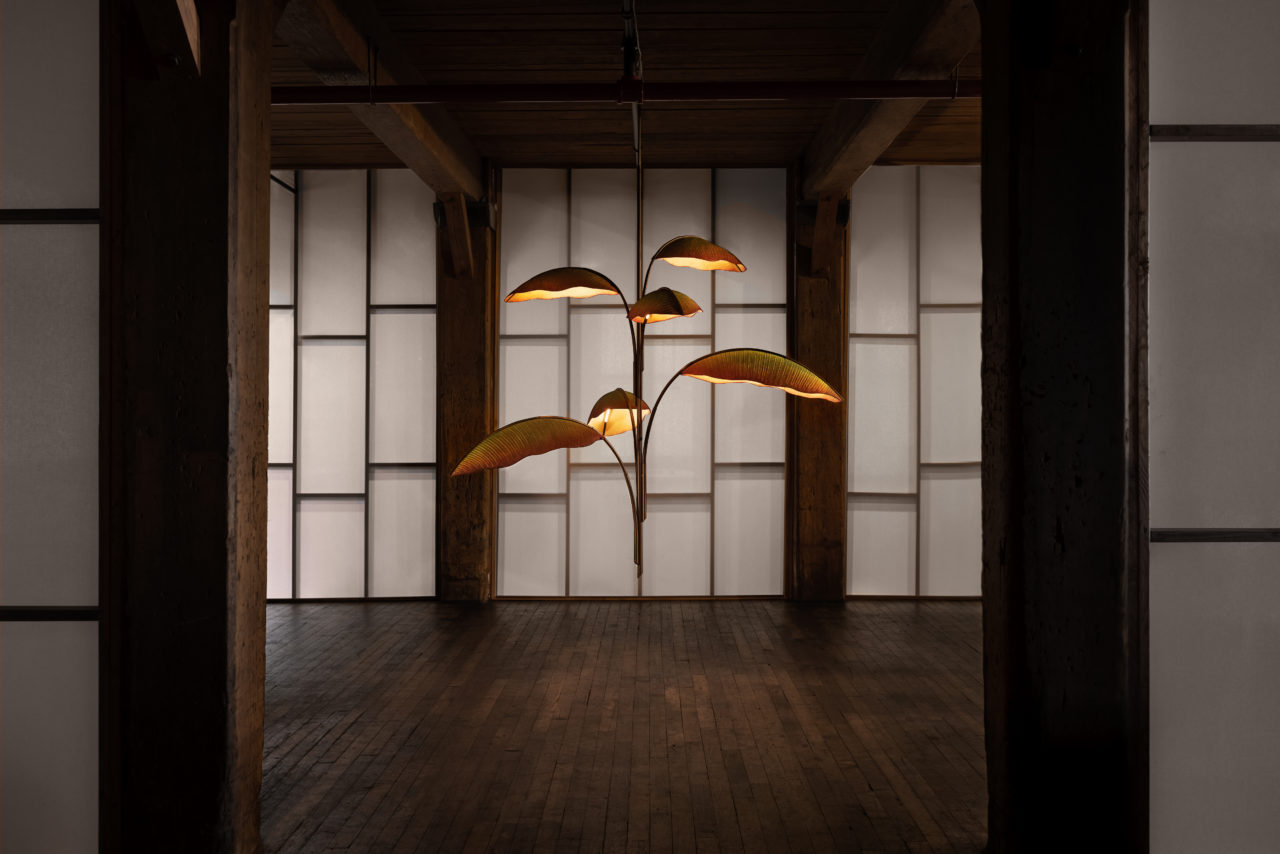
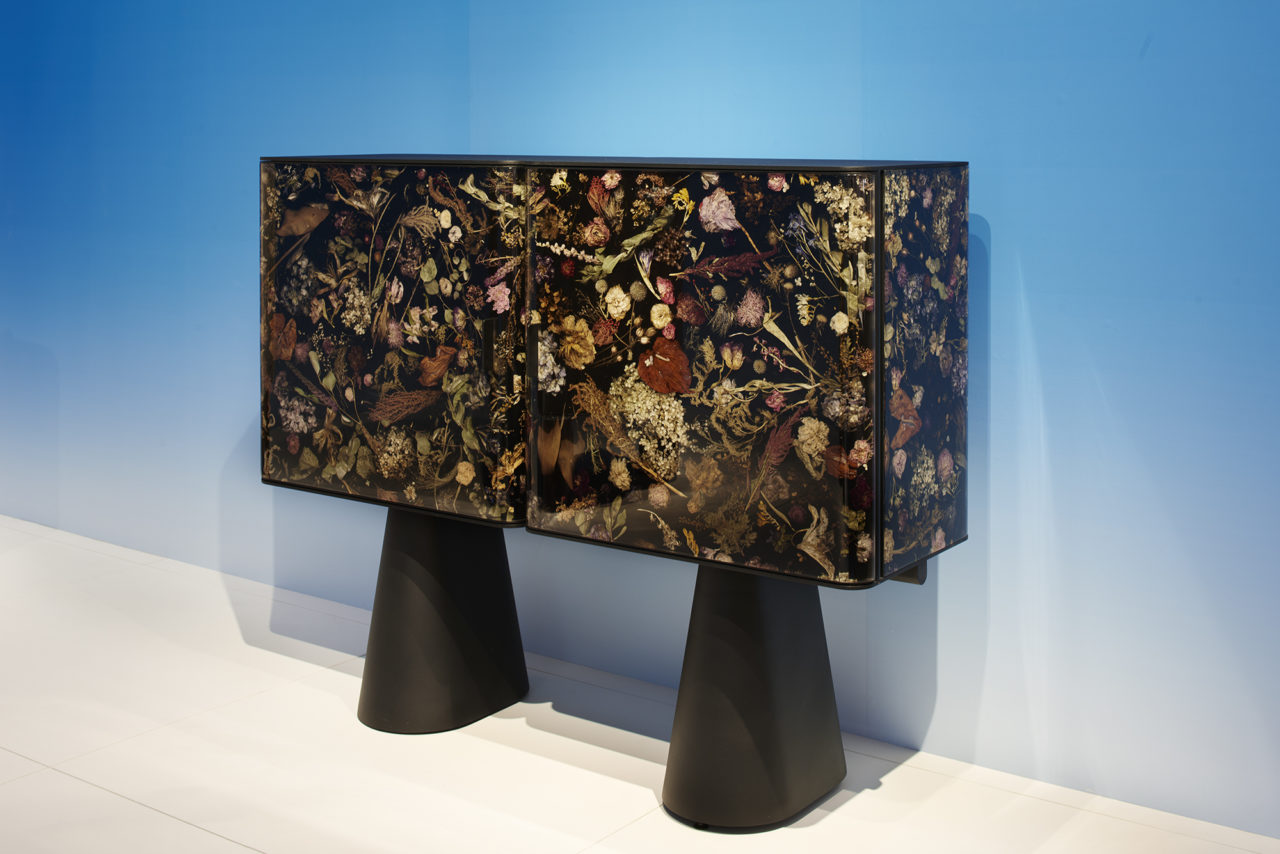
Another through-line at this year’s event was botany. The use of flowers and other plant matter was evident in the Josef Frank-inspired Flora Contemporaria cabinet of Polish designer Marcin Rusak—presented by New York’s Twenty First Gallery—and Brooklyn-based Pelle. Arguably best in show at the fair, the lighting design studio’s Infinite Lure installation brought together both sides of its architecturally-inspired and craft-led practice. The Curio booth was fashioned as a “hall of mirrors” to reveal the latest iterations of the cotton linter hand-casted Lure collection but also to debut its brand new aluminum Be Patient series. The kinetic showcase balanced monumental and architectonic lines with soft, organic articulations. Nearby, noted conceptual design duo mischer’traxler developed the interactive Embodied Nature installation for French champagne house and Design Miami sponsor Maison Perrier-Jouët. Comprised of many handcrafted, scaled organisms and a responsive video display, the project encouraged visitors to reflect on the interconnectedness of humans and nature. The design duo’s aim was also to bring awareness to biodiversity loss.
Following a similar line of inquiry, Mexico City-based design studio ATRA mounted the Earth Year 2100 mise-en-scene. The hypothetical interior was a speculation on what our domestic space might look like in 78 years. According to the ATRA team, technology will have become so advanced that we as humans will no longer be concerned with daily tasks as we know of them today. Staged in this futuristic moonscape, Elitis and Sandra Jordan’s slick, low-lying sofas, chairs, tables, and desks evoked a new level of comfort, softness, and versatility.

Design Miami 2021 also stood out as the first global design or art fair to fully accept cryptocurrency as payment. As with many of the events held during Miami Art Week, NFTs were also an important component of the fair. Noted talents like R & Company’s Sebastian ErraZuriz and Katie Stout created animated works exclusively available on the fair’s new proprietary app.
Beyond that, technology played an important role in Alex PROBA and Enjoy the Weather’s Tomorrow Land installation. Presented just outside the fair’s main tent and along Miami Design District’s central Paseo Ponti walkway, the playground-esque public intervention was developed as the second iteration of the neighborhood’s annual design competition. The aim of this civic project is to transform the area’s passageways with captivating art during its busiest season, Miami Art Week. Also curated by Anava Projects, this initiative adheres to its design for good mantra.
Visitors and passersby were not only able to witness the brightly-colored and playful amorphous shapes but also collected them for free using artificial reality. The forms could be aggregated using an app, adapted, and then superimposed in any setting. To offer such accessibility and customization is particularly poignant given the increasingly exclusionary nature of various virtual formats. The project was conceived in response to the central curatorial theme, comfort, and joy: a call to action. Studio Proba and Enjoy The Weather’s concept was a celebration of community and collaboration.
“I am overjoyed to have the opportunity to present my work on this scale in the real world and to collaborate with Enjoy the Weather to engage the virtual realm as well,” says Studio PROBA founder Alex Proba. “The project is not only huge for us in terms of color and scale of our art, but especially important as it is interactive and will get people outside, moving around the city, and contributing to a better tomorrow.”
On December 14, Anava Projects is launching an NFT fundraiser based on the Tomorrow Land initiative. Developed in partnership with dedicated marketplace OpenSea, the online auction—live until December 19—will benefits ProjectArt, a non-for-profit establishing art spaces for children.
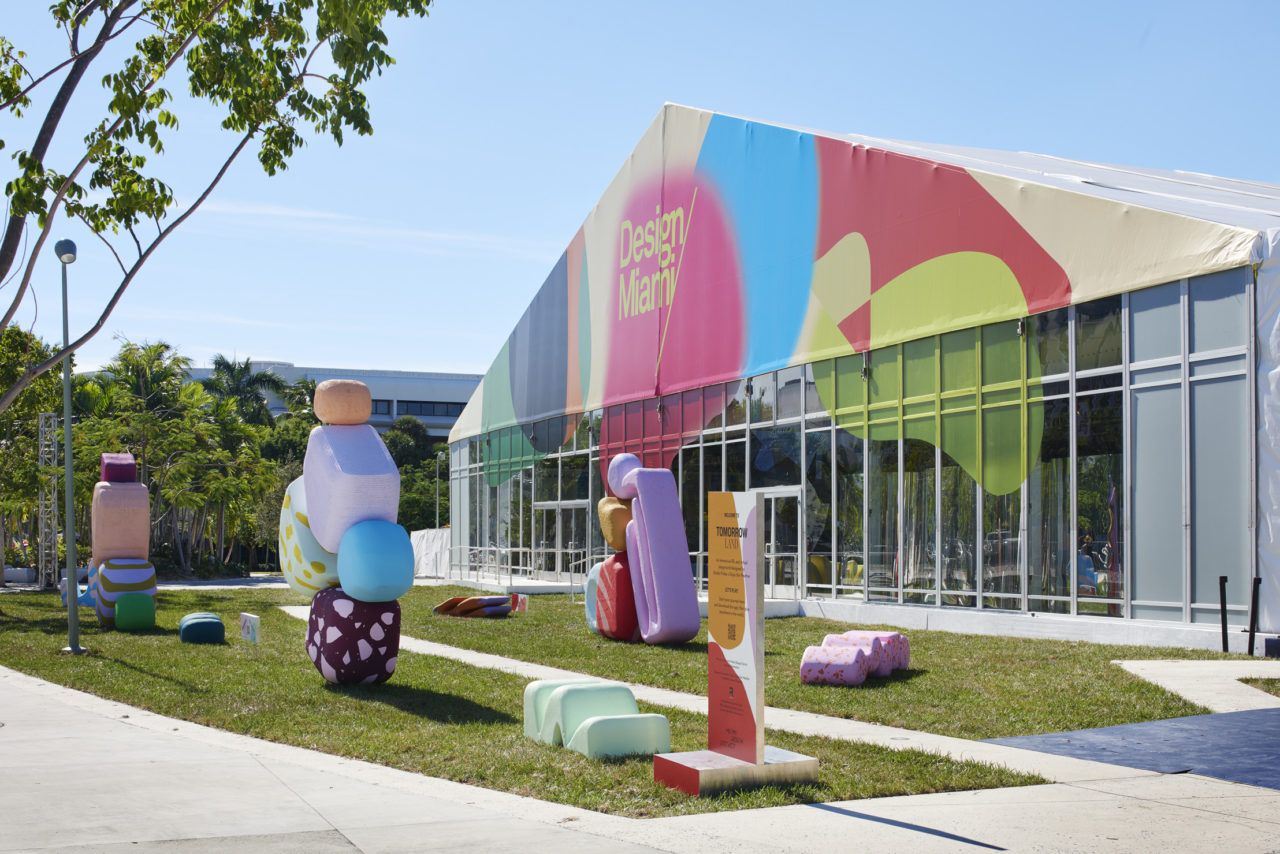
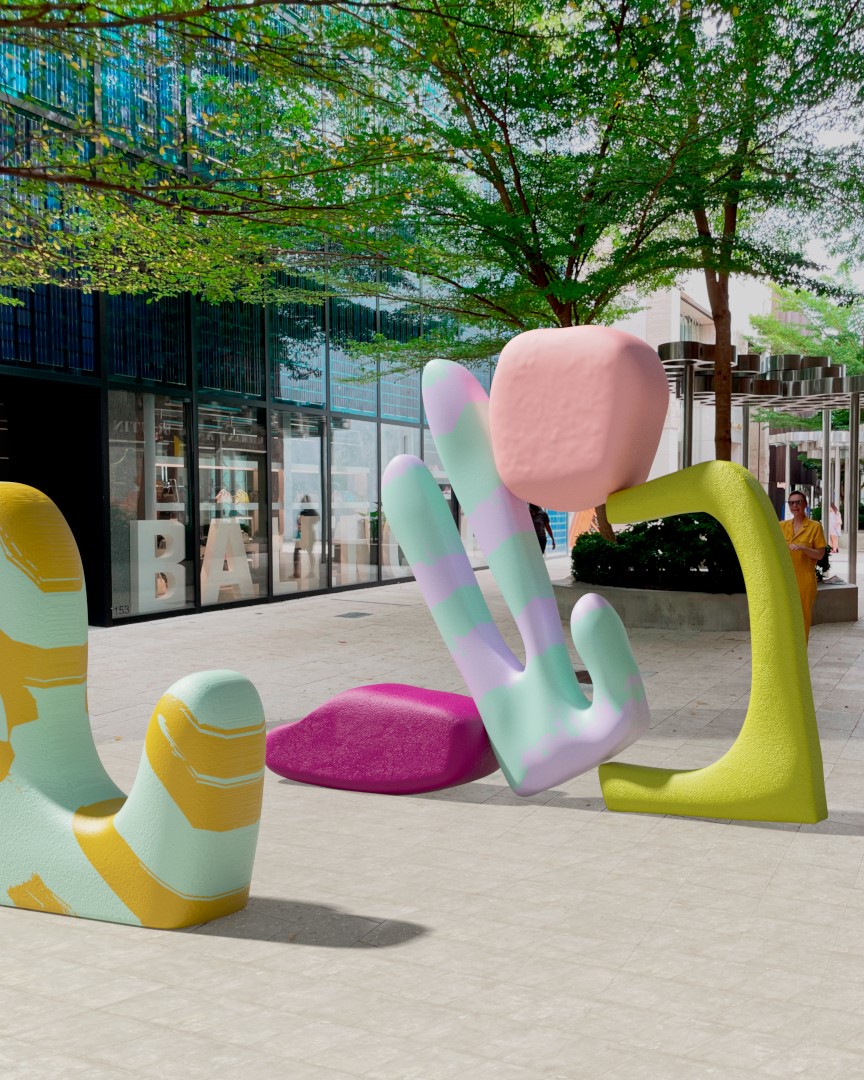
Outdoor and interactive installations could be found throughout Miami Art Week. Abutting the five main art fairs—Art Basel/Miami Beach, Scope, Untitled, NADA, Art Miami—these endeavors resoundingly drew on the critical links between technological innovation and tangible public space. The notions of accessibility and in-person encounters was a common theme, especially as an antidote to the ongoing pandemic. French fashion house Louis-Vuitton mounted an elaborate drone-based lights show to commemorate its late creative director Virgil Abloh and to celebrate the latest additions to its Objets Nomades outdoor furniture collection. Performances such as object-oriented dance choreographies—Brendan Fernandes’s ode to Noguchi long-time collaboration with modern dance master Martha Graham—or the gorilla-esque spray painting of a Collins Avenue storefront were joined by a number of architecturally-inspired interventions.

Mounted in Miami Design District’s Jungle Park, Es Devlin’s fully-immersive FIVE ECHOES installation was developed to commemorate the 100th anniversary of Chanel’s N°5 fragrance. Centered around a large human-scale labyrinth structure, the project was defined by a temporary forest of diverse plantings (elements that are key to the sent), strategically placed illuminations, odor diffusions, and sounds. Conceived as a synesthetic translation of the seminal perfume and Coco Chanel’s affinity for nature, the all-encompassing multi-sensorial environment was constructed on two levels. Sloping walkways lead to a central platform. Articulated in both outlined garden pathways and soft textile walls, the switch-back labyrinth pattern provided visitors with a chance to slow down, take a break from their hectic schedules, and reflect. Like a number of projects presented during the city wide event, the theme of our essential connection to nature was the take away message of this project.
“The word labyrinth originally referred to human movement: it was a dance before it became architecture,” says Devlin. “If our behavior can define our architecture, then perhaps our art and architecture can alter our behavior. If works of art can help us to see ourselves as part of the biosphere and symbiotically fused with it, if we can start to see plants and animals as equal protagonists as ourselves in life, I believe we have a better chance of making the fundamental behavioral shifts that are necessary not only to avoid climate chaos, but also to live in a more just, equitable, and joyful way.”
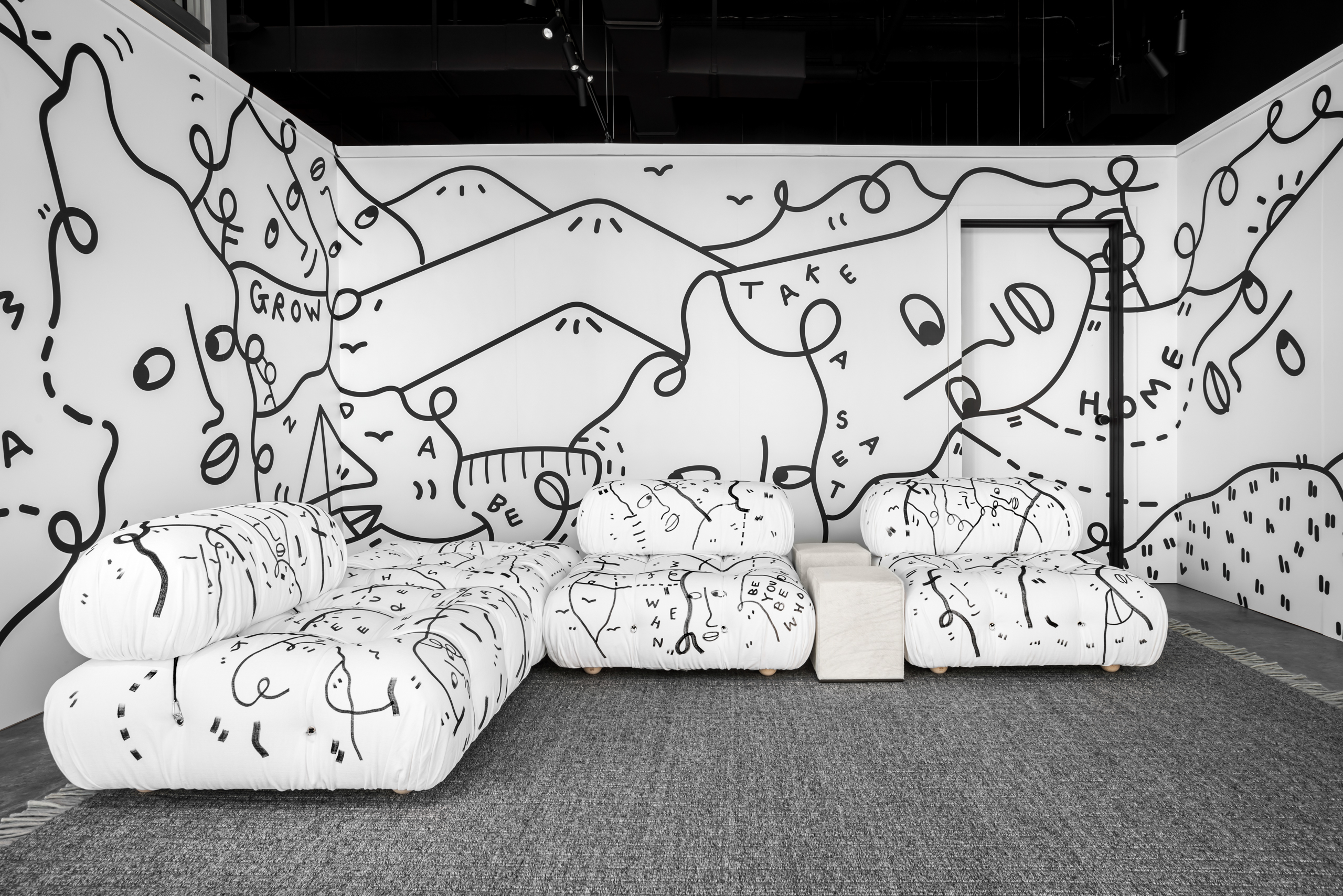
Among the diverse offerings at this year’s Miami Art Week was a new crop of contract manufacturers and material companies. Seeing the potential this multi-pronged event has in terms of reaching different audiences—not just wealthy collectors or party-goers—these manufacturers mounted dynamic activations to attract the crowds.
One such highlight was B&B Italia‘s collaboration with self-described ‘visual jockey Shantell Martin. The renowned British artist was invited by the Italian heritage brand to create an interpretative installation within their Miami Design District showroom based on her signature black and white drawings. A cartoon-inspired “continuous-line” sharpie mural was first applied to three walls of a storefront display and then to the company’s iconic Mario Bellini-conceived Camaleonda sofa during a live performance. The artist’s intervention was inspired by the design’s inherent adaptability.
Further a-flung in the nearby Wynwood district, leading natural stone supplier ACRA teamed but with noted art gallery Hauser & Wirth, Mexico City-based platforms Masa Gallery and OMR to mount a holistic exhibition in its striking Superflex & Esrawe Studio-designed showroom. Incorporating a facade-based mural by multi-disciplinary talent Stefan Brüggemann, sculptures by Gabriel Rico and Méndez Blake, and pared-back designs by Brian Thoreen, Mario García Torres, and Adeline de Monseignat, the company sought to highlight the versatility of its product. It also showcased the enduring prowess of Mexican and Mexico-based creatives.
As the various, too often siloed creative disciplines, continue to converge in both cultural and commercial endeavors, it’s clear that large-scale events like Miami Art Week will continue to stratify and welcome new types of participants. By its very nature, design is broad, especially where it’s crosses paths with art and public intervention. Platforms like this city-wide activation provide an important stage to best demonstrate this complexity. Whether or not it has become more inclusive is hard to gauge. What is certain, however, is that culturemakers like Carpenter and Carnick are working hard to shift this narrative and reveal the full potential of this sector. Major marketplaces like Art Basel and Design Miami are having to take stock of rapidly changing discourses if they are to keep up with the times.
Header image: Foreign body of chalk and iron chair and Amnesia or platelet apparition? chaise lounge by Samuel Ross (2021) (Oriol Tarridas)


